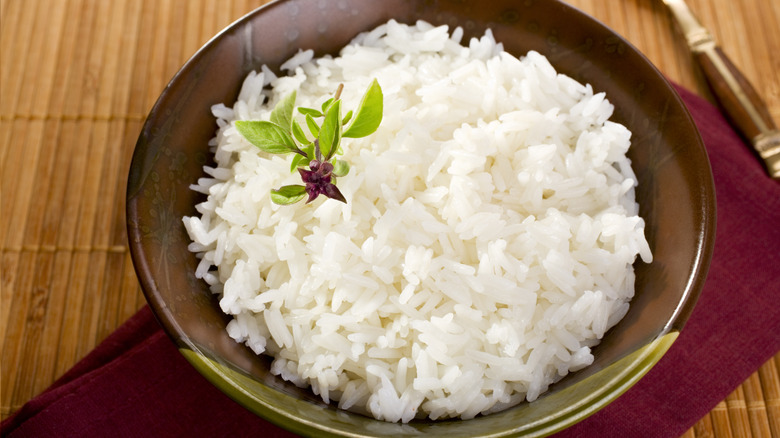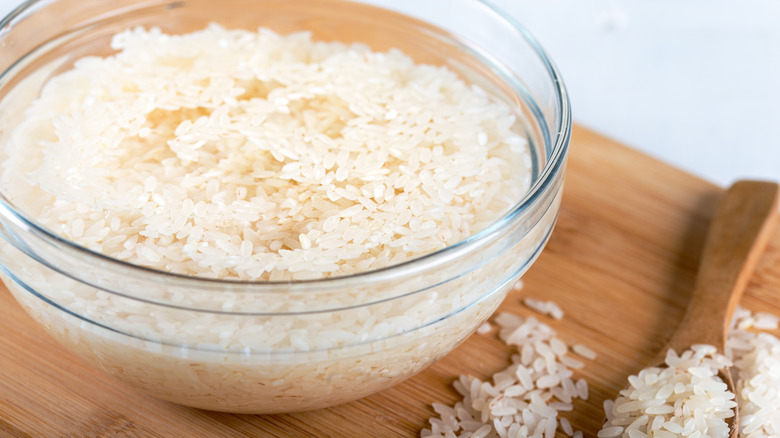The Prepping Mistake That's Ruining Your Aromatic Rice
Aromatic rices are medium- to long-grain varieties of rice with a distinct aroma that lends them their definitive tastes. The two most widely available globally are jasmine and basmati, both originating in Asia, but there are other lesser-known aromatic rices, too. Wild pecan rice has a nutty aroma and flavor reminiscent of pecans, and then there's the American-grown version of basmati called Texmati rice, which has subtle notes of popcorn. Proper preparation of aromatic rice is crucial to maximize its unique but subtle flavor profile, no matter which type. Not soaking your aromatic rice before cooking it might be what's ruining the outcome.
If you've ever cooked aromatic rice and haven't been able to tell the difference between it and any other type of rice, it could be due to your cooking method. In all these types of rice, the aroma is attributed to a natural chemical compound known as 2-acetyl-1-pyrroline, which decreases with cooking. Soaking the rice before cooking helps soften it so that it can cook quicker and still result in a perfect fluffy yet separated texture. Cooking rice for too long can break down that compound resulting in less fragrant, and therefore less flavorful, rice.
How to soak and cook aromatic rice for best results
To preserve the compound responsible for the fragrance in your aromatic rice, you want to be able to cook it as quickly as possible. But that doesn't mean you have to sacrifice on texture; while soaking, the grains of rice absorb some water, essentially plumping them up so that they cook evenly and result in tender rice in less time. Don't think this is a shortcut in the kitchen, though. You still need to account for the time you should soak the rice for — 30 minutes is enough, but you can allow it to soak overnight, as well, without affecting that precious perfume.
To soak aromatic rice, simply fill a bowl with cold water and add your desired amount of rice, allowing it to soak uncovered at room temperature for 30 minutes or overnight. Then drain the water and cook the rice, checking it a few minutes before the package directions instruct to test for doneness. If you've soaked your rice only for half an hour, it might be done up to 5 minutes before unsoaked rice would be; and if you've soaked it overnight, it might save 10 minutes of cooking time.
If you're going on to use the rice in a biryani or other oil-based dish, it's best to use an unflavored oil, to further preserve the aromatic essence of the rice. And if you find you have plenty of grains spare when dinner is done, make the most of our suggestions for using up leftover rice.

